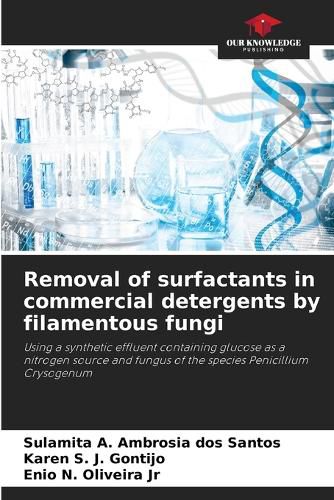Readings Newsletter
Become a Readings Member to make your shopping experience even easier.
Sign in or sign up for free!
You’re not far away from qualifying for FREE standard shipping within Australia
You’ve qualified for FREE standard shipping within Australia
The cart is loading…






Sulphonated linear alkylbenzene (LAS) is an anionic surfactant used in the formulation of detergents and various cleaning materials. This surfactant is indispensable in their formulation, but it is not completely biodegradable and can be toxic to the aquatic environment. In order to analyse the efficiency of the filamentous fungus Penicillium chrysogenum in the biodegradation of LAS, an experimental design with three axial points was prepared to vary the concentrations of glucose and LAS in a total of eleven trials. The trials were incubated in a shaker at 25 degreesC and 180 rpm for a period of five days for fermentation. To quantify this reduction, an analysis based on the methylene blue method (MBAS) was carried out. The filamentous fungus Penicillium chrysogenum, used in the process, proved to be capable of biodegrading anionic surfactants widely used in liquid detergents that are discharged daily into domestic sewage and which, despite being biodegradable, achieved a high level of LAS biodegradation, reaching 99.4%, while conventional treatments in anaerobiosis remove a maximum of 70% of surfactants in real effluents.
$9.00 standard shipping within Australia
FREE standard shipping within Australia for orders over $100.00
Express & International shipping calculated at checkout
Sulphonated linear alkylbenzene (LAS) is an anionic surfactant used in the formulation of detergents and various cleaning materials. This surfactant is indispensable in their formulation, but it is not completely biodegradable and can be toxic to the aquatic environment. In order to analyse the efficiency of the filamentous fungus Penicillium chrysogenum in the biodegradation of LAS, an experimental design with three axial points was prepared to vary the concentrations of glucose and LAS in a total of eleven trials. The trials were incubated in a shaker at 25 degreesC and 180 rpm for a period of five days for fermentation. To quantify this reduction, an analysis based on the methylene blue method (MBAS) was carried out. The filamentous fungus Penicillium chrysogenum, used in the process, proved to be capable of biodegrading anionic surfactants widely used in liquid detergents that are discharged daily into domestic sewage and which, despite being biodegradable, achieved a high level of LAS biodegradation, reaching 99.4%, while conventional treatments in anaerobiosis remove a maximum of 70% of surfactants in real effluents.